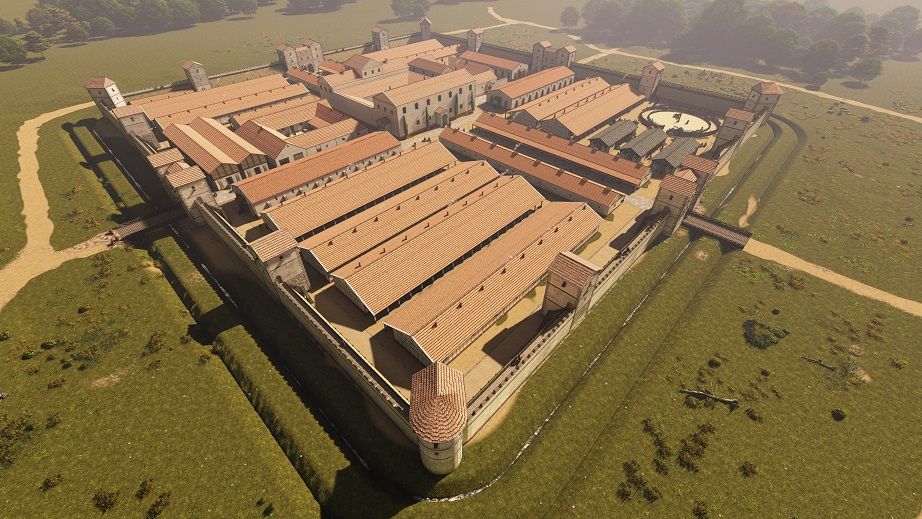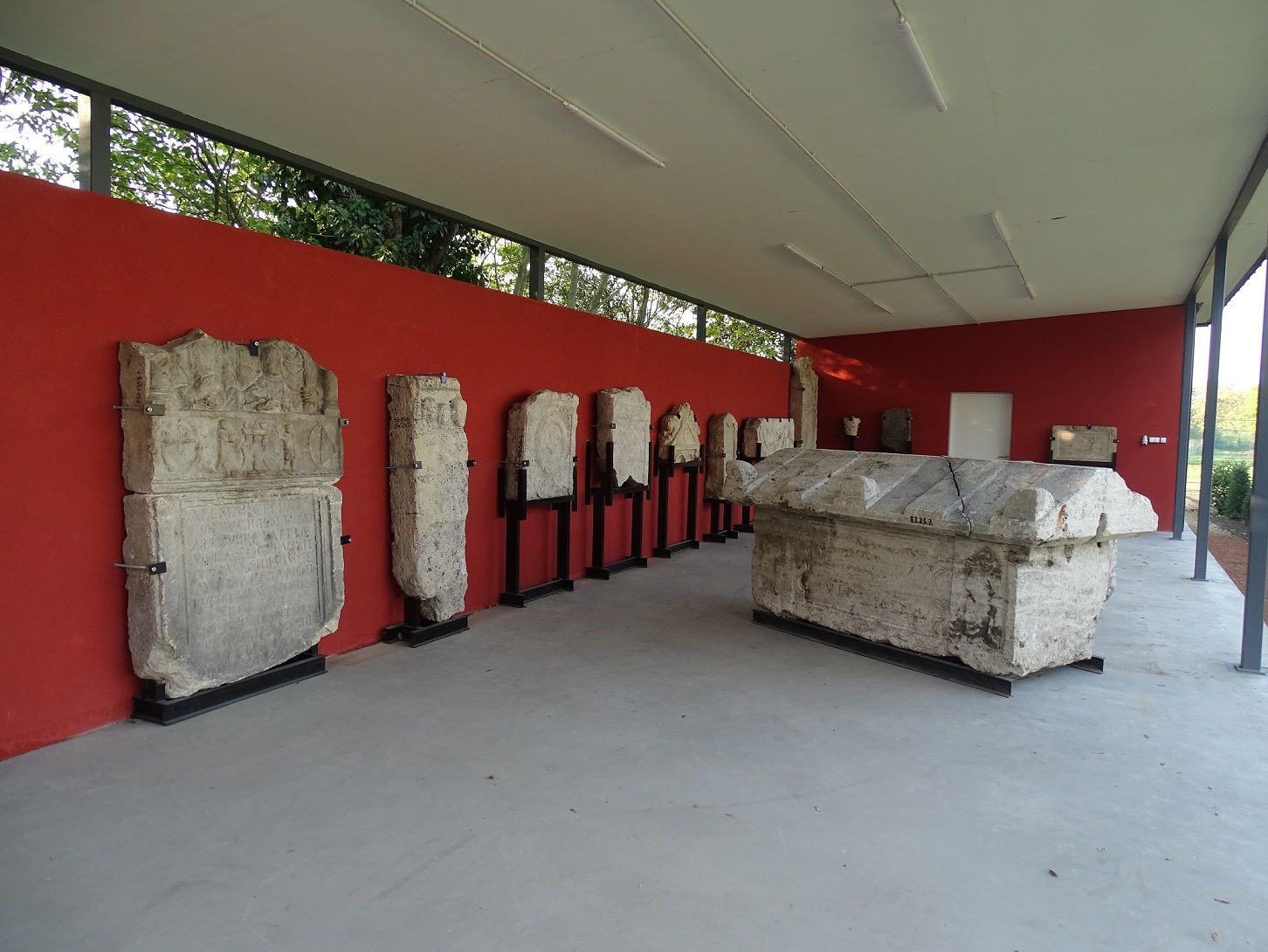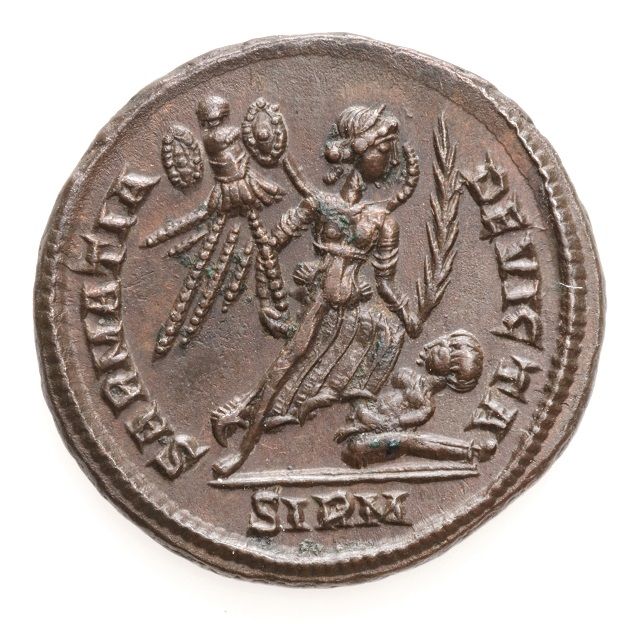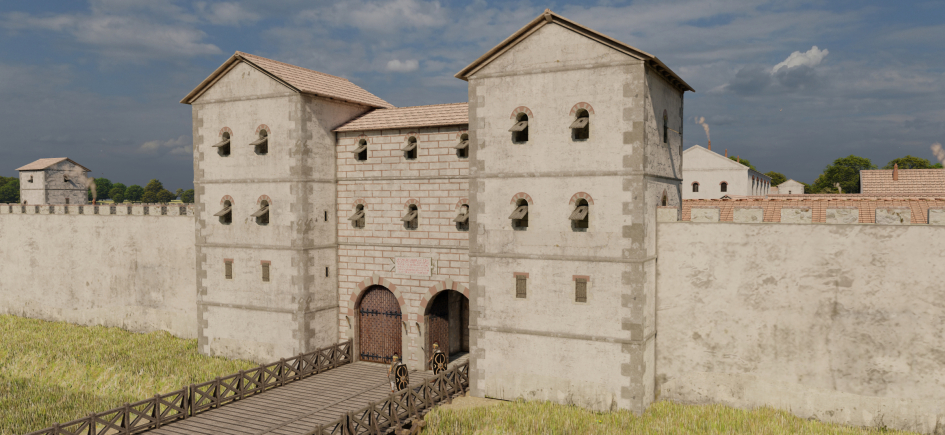
CAMPONA ARCHAEOLOGICAL PARK | TICKETS
History of the Campona Archaeological Park
Few people know that the name of the Campona shopping centre in Budapest-Budatétény, famous for its Tropicarium, is not a fancy-sounding name, but rather the name of the nearby Nagytétény auxiliary fort and settlement along the Danube frontier of Roman Pannonia. It is also not well known that this fort was the scene of a historical event of imperial importance in the 4th century AD. The Campona Roman fort was known only from the results of archaeological excavations after its discovery. Its area was overgrown by nature and only experts and those who interested in the local history of Nagytétény knew what a miracle the earth hides here. Recently, the opportunity has opened up for the general public to get to know this Roman-period fortress with spectacular ruins and an exciting history. By creating an archaeological exhibition and a visitor centre in 2022, the Hungarian National Museum has set the goal of making this long-neglected monument available for tourism. All of this makes it possible for archaeological research to start again on the site, and with the future development of the exhibition galleries, the ruins of the Roman fort will also develop into a spectacular cultural and tourist destination.
Let's discover Campona!

Lapidary
In addition to the stone monuments presented at the exhibition, 16 carved Roman stone monuments also unearthed from Nagytétény and its surroundings can be seen in the open air stone gallery. Roughly a third of all known large-scale Roman stone monuments were included in the exhibition.
The state of the stone monuments is fragmentary and varied, as they were typically found not in their original place of erection, but in their re-use environment. In the late Roman period, the earlier carved stones were recycled as building materials – usually built into walls or to assemble tombs. For this, they were broken or cut to the desired size.
The exhibited stone monuments can be dated to the 2nd and 3rd century AD. Their material is mainly limestone quarried in the Budapest area. In terms of their types, tomb steles, sarcophagi, construction slabs and altars, as well as building elements decorated with reliefs and carvings, including a column head, were included. Although the exhibited pieces do not represent the totality of the types of carvings from the Roman period, they still give us a spectacular insight into the social and religious life, burial customs, and the art of the stone carvers of Nagytétény's Roman predecessor, the Campona fort and its civil settlement around it. Among the exhibited stone monuments, some special pieces were also presented, which attest to the better financial conditions and more refined tastes of some of the inhabitants of Campona. In addition to the carvings, the variety of inscriptions is also outstanding. The engraving of the letters spans the period from the beginning of the 2nd century to the middle of the 3rd century. Indigenous Celts and their descendants, as well as settled Roman citizensand Thracian soldiers and freedman appear in the texts.

Playground
Near one of the corner towers of the late Roman fortress, at the entrance to the visitor centre, a small-scale playground welcomes families with small children. The experience elements of this playground were inspired by the architecture of Roman military fortifications and the love of ancient people for horses. The main attraction of a playground set up in a large sandpit under the shady trees is the Roman fortification section evoking towers and fort walls, which is made enjoyable by built-in dexterity and balance development games and climbing frames. The little ones can imagine themselves in the busy life of the Roman cavalry soldiers by jumping on spring rocking horses.
Visitor Center
Follow the Roman helmet! Around the Nagytétény baroque castle, the guideposts ending in Roman helmeted faces help the visitor to get to the visitor centre through the gate opening from Szent Flórián Square.
The "Campona Victrix - Victorious Campona" visitor centre was established behind the baroque castle, in the former manor stable building, which - after renovation - now houses a reception building that meets all visitor needs. The building's central reception area offers an opportunity to refresh and relax. In the museum shop - in addition to the books and souvenirs of the Hungarian National Museum - you can also find publications presenting the Roman fort of Campona. Part of the visitor centre is an activity space suitable for events, conferences and screenings, which can also accommodate temporary exhibitions. In the play corner, children can put on the helmets and armour of Roman soldiers. And with the help of replicas and plastic weapons, they can test how heavy a Roman cavalry shield is and how to swing the terrifying gladius of the Romans. Through toy figures depicting Roman families and soldiers, and on the wings of their own imagination, they can fly back to the fabulous world of the Roman Empire. The main visual element of the visitor centre is an exhibition that introduces visitors to Nagytétény's Roman past. The open-air stage connected to the visitor centre offers the opportunity to organize performances, ancient music shows or even classical and/or popular music concerts.
Exhibition
The visitor centre's main attraction is the exhibition, which guides the visitor to Nagytétény's Roman past with the help of models, 3D reconstructions, films and replicas of artefacts. Spectacular 3D graphics illustrate the architectural characteristics of the Roman military fort of Campona and the different stages of its development into a late Roman fortress. A scaled-down reconstruction of a war machine shows the development of Roman distance combat. Campona was garrisoned by an auxiliary unit of mounted archers, so the exhibition is based on the promotion of the cavalry of the Roman army, the cavalry forts and the ancient cultural history of horses. Visitors can learn about the fighting manners, equipment and weapons of the Roman cavalry and get answers to the exciting question of where the horses were placed within the fort and how the natural needs of the horses were taken care of. Few people know about the Roman army that it also had mounted archery units, and most of them were stationed in the Pannonian provinces. In addition to their special weaponry and training, their archery feats, which can be seen in the exhibition, deserve attention. Campona was the scene of a battle in AD 322. In this battle Emperor Constantine I the Great personally won a huge victory over the Sarmatians who were besieging the fort. This historical event was of imperial importance. Campona's name was even included in a glorifying poem praising the triumph of the emperor. The mission of the exhibition is to make this victory as widely known as possible, including with a live-action short documentary film.

Park
The archaeological park, which can be accessed from the visitor centre, presents the area of the Roman fort of Campona surrounded by walls, gates as well as angle and interval towers, its former buildings and main roads with built and horticultural tools and spectacular virtual reconstructions. The park is largely located in the area of the castle's former orchard. The property conditions and the uninhabited area contributed to the fact that between 1949 and 1960 as well as 1995 and 2003 we learned about the fortifications of Campona castellum and the main periods of its construction through extensive archaeological research. With the help of the roads running along the main roads of the fort, we can discover the southern main gate of the fort facing the enemy (porta praetoria), which consisted of two gate openings, a gate house and two gate towers. Through the gate, we enter the wide main road of the fort, which is flanked on both sides by a covered sidewalk supported by columns and a long building. The road led to the fort’s headquarters (principia), which was the religious and administrative centre of the cavalry unit garrisoned here. The road running at the base of the rampart of soil behind the wall leads the visitor to one of the fort’s interval towers and to the east gate (porta principalis sinsitra). In the 4th century, the fort’s wall were raised and equipped with new towers resembling a fan extended at the corners. The walls of the southeast fan-shaped tower raised above the ground can be seen in front of the visitor centre, opposite the playground. Reconstructions of the different periods of the Campona fort are displayed on the northern fence of the park. With the help of three photo points, the visitor can also position himself within the castellum and see from that location what the Campona auxiliary fort might have looked like at the beginning of the 3rd century AD.
-








